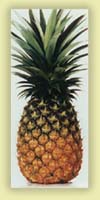Tessellations in the World
|
Student: We learned that a tessellation is a repeating polygonal shape with no gaps or overlapping sections. Who first discovered these patterns, and who uses them? Mentor: Well, first of all, think of different shapes that occur in nature, and see if you can think of some that can be classified as tessellations. Student: I can think of the scales on a fish, or a tortoise shell, or a pineapple. 
Student 2: Or an ear of corn on the cob or a honeycomb for bees. 
Mentor: Good! So just by observing the world around us we can learn to recognize patterns and to use them in our work. Can you think of examples where people use tessellations in their work? Student: A brick-layer creates tessellations while building walls! Student 2: A quilt-maker sews blocks of fabric into tessellating patterns in a quilt! Mentor: Right. For thousands of years people have used tessellations to design beautiful buildings, mosaics, woodwork, weavings, quilts, floors, and gardens. Ancient Greeks and Romans created intricate mosaics using small pieces of stone embedded in walls and floors. These mosaics are not tessellations in a mathematical sense unless the shapes of the stones in them form a repeating pattern. But often, these mosaics use geometric designs that will tessellate across a plane in their borders or backgrounds. Larger tilings made of marble or granite are used in floors patterns. Sometimes entire floors are laid out in giant plane tessellations. Islamic art is noted for having extremely ornate mosaics. The more intricate designs have overlapping segments and therefore are not true mathematical tessellations. The highlight of tile-making and designing came in the mid sixteenth century during the reign of the Turkish sultan Suleyman the Magnificent. Many ancient mosques and palaces still stand in Istanbul, and their bright colored tiles have not faded. The Blue Mosque and the Hagia Sophia are two famous sites in Istanbul, Turkey, which use many tessellating patterns in their design. Sometimes the designs painted on the tiles form their own geometric shapes that when viewed from a distance appear as a tessellating pattern. What other regions in the world use tessellating design patterns in walls and floors? Student: China, where the famous blue and white porcelain ceramics inspired artisans in other countries to paint similar looking tiles; Japan, which is noted for wooden screens carved in tessellating designs; Northern Africa; and Spain, especially in Moorish architecture. Student 2: Also the Netherlands with the famous Delft tile industry and England. The floor of Westminster Abbey in London has a fabulous design that many other abbeys imitated. Mentor: Good! Other cultures noted for using tessellations in their building and textile design include the Navajos and the Amish. What others can you think of? Student: We can find art and architecture books in the library and find some more. But why are we studying them today? Mentor: There are lots of reasons to learn about tessellations!
|
